Chiba Institute of Technology
Chiba Institute of Technology (千葉工業大学, Chiba kōgyō daigaku) is a private university in Narashino, Chiba Prefecture, Japan. Abbreviated as Chiba kōdai (千葉工大, Chiba kōdai), Chiba kō (千葉工, Chiba kō), kōdai (工大, kōdai), sen kōdai (千工大, sen kōdai).
千葉工業大学 | |
 | |
| Motto | 師弟同行 自学自律 |
|---|---|
| Type | Private |
| Established | 1942(Origins 1929[1]) |
| Endowment | N/A |
| Chancellor | Prof. Kazuhito Komiya |
| Students | 9,935 |
| Location | , , |
| Campus | Urban |
| Nickname | CIT, etc. |
| Website | CIT(English) CIT(Japanese) |
The school was founded in 1942 in Machida, Tokyo. In 1946 it was relocated to Kimitsu, Chiba Prefecture, adopted the present name at the same time. Four years later, it was moved to the present location. It is the oldest private technical university in Japan.
CIT was conceived as a central educational institution of Greater East Asia Co-Prosperity Sphere.During the Second World War, the professor at CIT was involved in the development of Nakajima Kikka.
History


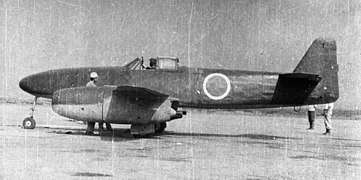
Chiba Institute of Technology began as Kōa Institute of Technology (興亞工業大学, Kōa kōgyō daigaku). The meaning of Kōa means that Asia wakes up. Japanese government issued a permission of the establishment on December 7, 1941(December 8 Asia time). Kōa Institute of Technology was founded by Prince Naruhiko Higashikuni, Osami Nagano, Kuniyoshi Obara, Minoru Tōgō, Kotaro Honda, Hidetsugu Yagi, Shigenao Konishi, Yuzuru Hiraga, Nobuteru Mori (Mori Konzern founder・See also Shōwa Denkō), Satoru Mori (Son Nobuteru Mori), Kitaro Nishida, Shunpei Honma, Tokutomi Sohō, Saneatsu Mushanokōji in 1942.Also, Kunihiko Hashida is involved as a representative of the Government of Japan.
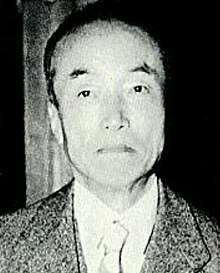

 Kunihiko Hashida(Government representative of Japan)
Kunihiko Hashida(Government representative of Japan) Minoru Tōgō
Minoru Tōgō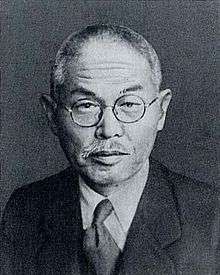
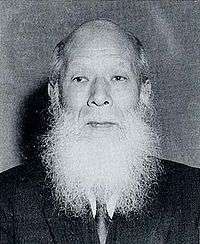
 Shigenao Konishi
Shigenao Konishi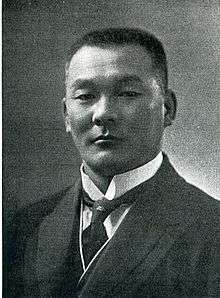
 Satoru Mori
Satoru Mori
 Shunpei Honma
Shunpei Honma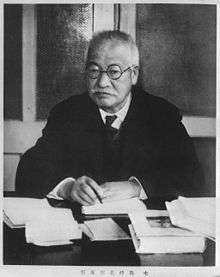
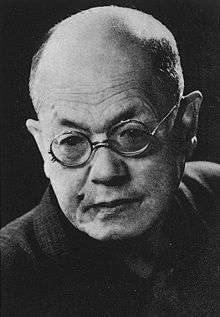
The college was founded as a national policy for the rise of Asia tech. The purpose of the construction of the college was a contribution to the world culture and dissemination of engineering education to the people of Asia.
Kōa Institute of Technology took full-scale support from University of Tokyo, Tohoku University, Tokyo Institute of Technology as an educational institution to bring up the engineers who would lead a nation. Department of Industrial Engineering and materials management courses, aeronautical engineering, mechanical engineering has been installed at the university.
In 1944, the headquarters of the University was moved to Sophia University in Kōjimachi from Tamagawa Gakuen. The metallurgy course work was relocated to the Kawasaki Heavy Industries factory yard in Kawasaki, Kanagawa in September.
The Kōjimachi and Kawasaki campus were destroyed during the April 13, 1945 and May 25 Tokyo air raids in World War II. The college was consigned to a class in the Tokyo Institute of Technology until 1946.
The college changed its name to Chiba Institute of Technology in 1946 and moved to the Kimitu campus. Four years later, it was moved to the present location.
On the educational philosophy of CIT
- / Wikisource|興亞工業大學設立趣意書 (in Japanese)
CIT was created as a base for the Asian cultural sphere to contribute to world culture. The educational goal of the university is to train engineers who contribute to world culture. Many Japanese universities offer education based on the traditional European educational philosophy, but CIT provides personnel education based on the Asian philosophy based on the Kitaro Nishida philosophy. Education at CIT is based on the policy of Progressive education from the very beginning, cherishing liberalism and individuality respect.
Campuses
1942~
- Machida, Tokyo Campus (1942–46)
- Chiyoda, Tokyo Campus (1943–45)
- Kawasaki, Kanagawa Campus (1943–45)
- Kimitu, Chiba Campus (1946–50)
1950~
- Tsudanuma, Chiba Campus (1950-)
- Chigusa, Chiba Campus (1967-)
- Sibazono, Chiba Campus (1986-)
Schools and laboratories
Undergraduate schools
- School of Engineering
- Department of information science
- Department of social system science
Graduate schools
Research laboratories
- Future robot research center (furo)
- Planetary probe research center
People
Alumni
- Masayuki Uemura, a game engineer
- Kazuki Akane, a Japanese director of Japanese animation.
- Hiroshi Tachi, an actor (dropout)
Faculty
- Susumu Tadakuma, professor emeritus[2]
- Kouji Hirato, part-time lecturer (1990-1998)
Interchange
- Royal Institute of Technology
- University of Toronto
- The University of British Columbia
- Singapore Institute of Manufacturing Technology
- University of Missouri-Rolla
- Tennessee Technological University
- The University of Alabama in Huntsville
- The Pennsylvania State University
- University of Colorado at Boulder
- Chiba University
- Chiba University of Commerce
- Chiba Keizai University
- Chuo Gakuin University
- Kanda University of International Studies
- Meikai University
- Open University of Japan
- Seitoku University
- Shukutoku University
- Tokyo University of Information Sciences
- Wayo Women's University
- Reitaku University
- VNU University of Engineering and Technology
References
- Tamagawa Gakuen webpage-Japanese Archived July 20, 2011, at the Wayback Machine-Tamagawa Gakuen is one of the important headwaters of the founding of Chiba Institute of Technology.
- IEEE Richard H. Kaufmann Award Recipients: Sususmu Tadakuma
External links
- Official website (in Japanese)